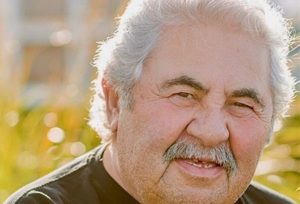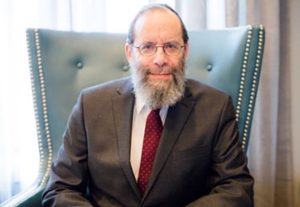Arlo Haskell’s The Jews of Key West: Smugglers, Cigar Makers and Revolutionaries (Sand Paper Press) illustrates an unexpected perspective of the southern, hurricane-magnet city in covering its 195-year-old Jewish community.
Haskell is the executive director of the annual Key West Literary Seminar. Not a historian, but a writer, administrator and poet, he has transformed dense research from diverse sources into an easy-to-read history and tribute. He was encouraged to tackle this project by Susan Ochroch Savitch, a fellow Key West resident, who had collected and provided Haskell with a large assortment of material. His book covers much of the almost-lost history of Key West’s Jewish population, from the town’s founding through its postwar boom.
How did the book come about?
Susan Ochroch Savitch started the project. She split her time for 30 years between New York and Key West – she was fascinated by the history of the place and more so from the Jewish families she met through the synagogue. She had permission to document their stories, and had oral histories, a lot of photographs, documents and notes from conversations, and had gathered and made copies from the Jewish Museum of Miami, and Key West archives. She wasn’t going to take it that far but wanted it to continue, so she commissioned me to write the book. It took seven years – the deeper I got, the more questions came up.
We associate other areas of Florida and the U.S. with Jewish communities, but not Key West. Are you surprised that no one has written about this before?
Yes and no. No one has done this before because the information was so scattered, as Susan found. There were pieces in Key West, Miami, Harvard, the National Library of Havana,and Charleston, S.C. Ten years ago you would have needed assistants and a huge travel budget, but over that time period much more information was put online. Because it was all digitized, it was researchable, but the pace of scanning of historic documents was quite slow. That actually helped me because periods of feeling overwhelmed were interspersed with periods of understanding. Things settle in a different way over the course of a few years.
Did you come across fun facts in your research?
People underestimate the history of Key West as it has been a thriving place since 50 or 60 years before Miami existed. In the days when it was accessible only by boat, it traded with Charleston, Savannah, Ga., Havana, New York, and Galveston, Texas and New Orleans. Key West was not an isolated outpost but a cosmopolitan trade hub.
So it comes as no surprise that Key West had the first synagogue in South Florida as well as the first Jewish community. It was a surprise to find that the Jewish community in Key West had strong ties with a flourishing community in Cuba, a short 145 kilometres away. We don’t associate Cuba with having their own Jewish community, but Cuba’s independence was attractive to Jews, and their history on the island is well documented in Spanish, in 27 volumes, which are now all digitized and translated on the University of Havana ‘s server.
READ: THE FLORIDA KEYS – IT DOESN’T GET MUCH BETTER
It seems like there are several important developments through the history including the Great Key West Fire of 1886. Can you expand on that?
The fire destroyed a huge chunk of Key West and a big wave of Jewish immigration followed that fire, including many peddlers who saw the business opportunity. They had been in Savannah and Charleston. The commercially active hub in Key West suddenly had no inventory, so the peddlers followed the existing shipping channels, bringing goods. It was a golden economic opportunity that allowed them to save up and eventually buy their own stores.
How tolerant was Key West for the incoming Jewish immigrants initially?
At the time when the first wave came in the late 1880s, Key West was living through a wonderful period – very cosmopolitan, and diverse and welcoming to people from all places. Key West was filled with either Cuban born or of Cuban parentage. Stores often posted their wares in Spanish and English. Jews, who were originally from Poland, Russia and Romania, were accepted into this community, especially once they became established as merchants. They established schools, clubs, Jewish religious congregations including the present B’nai Zion. There was one Jewish newspaper in circulation.
But the city did crack down on peddling, by enacting a licensing fee of US$1,000.
The 1889 yellow fever epidemic seemed to be key to the evolution of the community. I understand that when it went through the Key West Jewish community, they were blamed as the cause?
The health inspector for the State of Florida did spend time and extra attention investigating Jewish households, and did have racial theories about the spread of yellow fever. He believed that black people couldn’t get yellow fever and that Jews and others were more susceptible. He and his officers went into the home of one specific couple, and removed all of the bedding, mattresses and clothing and burned all of it and fumigated the house.
Where can Jewish visitors go in Key West to get the essence of Jewish history and culture there?
The Jewish section of the cemetery in 1891 has many names from that wave of Jewish settlers in the 1880s, and 1890s with the earliest grave in 1891. The restaurant called Sarabeth’s is on the site of the first official synagogue and Jewish travellers like to seek it out. I hope to see plaques commemorating certain places for Jewish people to visit. I am now very attuned to neighbourhoods in granular detail. For example, the book documents details of the Jewish history of the 700 block on Duval Street. It has been added to some of the walking tours available. Mam’s Best Food kosher restaurant is also recommended to visit.
What surprises did you discover during your research?
I was surprised to come across the Jewish support for the Cuban Revolution, which was one of the stories in Susan’s research that I thought was exaggerated. It was quite widespread, but was kept secret.
The story of the birth of the cigar industry in Key West was also fascinating. With Cuban help, it was the leading industry started by Jewish manufacturers, and was a major industry from the 1860s to the 1890s. There were one million hand-rolled cigars made annually. A handful of Jewish manufacturers moved the industry to Key West and moved skilled labourers over. It was the first large scale-industry here and cornered the market. That story gets told as a Cuban story, but it’s really rooted in the Jewish manufacturers who took over part of a Cuban dominated industry.
How much influence does that Jewish history have on today’s Key West?
That period, the cosmopolitan diverse open mindedness that Jews found so welcoming and hospitable was welcoming to other immigrants. That period of time was where Key West’s heart is today. “One human family” is the motto of Key West.
Later, when Hitler was rising in power, Jewish immigration quotas to the U.S. were reduced by 90 per cent. The Jewish community in Key West actively resisted those laws, and smuggled European Jews into Cuba and into Key West. That spirit of independence is referenced by a quotation in the book, “My grandfather was a law abiding citizen but in bringing people to safety there was a higher God in play.”
Key West is full of rich and often-surprising history, but it’s not always apparent on the surface. As with its impeccably restored old homes, you often have to peel back a few layers of paint to know what really happened. Whether you’re Jewish or not, the more you can read about Key West’s history before arriving, the closer you’ll come to the “real” Key West, and the more you’ll understand why this place means so much to so many people.







